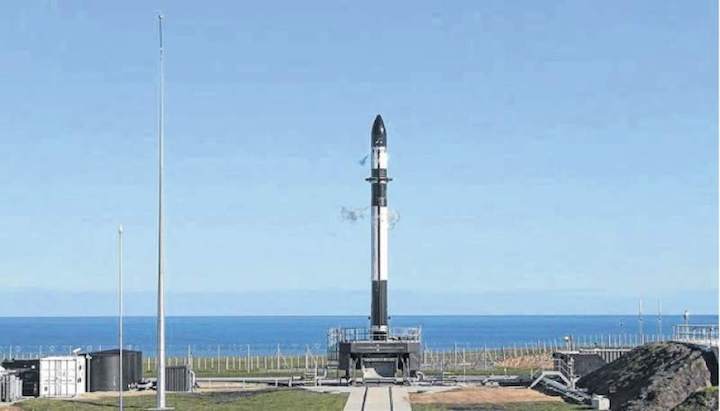24.06.2018
Rocket Lab abandons today's planned launch
One of the down range tracking dishes in the Chatham Islands was the cause of delay

Rocket Lab has abandoned today's planned launch of its Electron rocket from Mahia.
The company said problems recovering a downrange ground station in the Chatham Islands, which will track the Electron rocket as it climbs into orbit, was the reason.
Officials have not set a new target launch date.
Today was the first of a 14-day launch window, with daily launch opportunities between 12.30pm and 4.30pm.
Rocket Lab's Electron rocket, named "It's Business Time", will be the company's second orbital mission.
The launch window, originally slated for April 20 to May 3, 2018, was moved after unusual behaviour was identified in a motor controller during a wet dress rehearsal.
The cause of the issue was found and corrective measures put in place.
New customers were added to the original launch manifest, including IRVINE01, an educational payload from the Irvine CubeSat STEM Program (ICSP), and NABEO, a drag sail technology demonstrator designed and built by High Performance Space Structure Systems GmBH.
The new payloads join existing customers, two Lemur-2 satellites from Spire Global and a GeoOptics Inc. satellite by Tyvak NanoSatellite Systems.
The payloads will be launched to a 500km x 250km elliptical orbit at 85 degrees, before being circularised using Rocket Lab's Curie engine powered kick stage.
The Electron rocket has had two successful test flights, one in May last year, and the other in January 2018.
Rocket Lab's Electron rocket is relatively small. At almost 17 metres tall, it's a fraction of the height of SpaceX's 70-metre-tall Falcon 9. But Electron aims to deliver small satellites between 150kg and 225kg into low Earth orbit at a lower price.
Rocket launch scrubbed due to motor controller issue
Rocket Lab's intended rocket launch from Mahia has suffered another delay.
A spokeswoman for the US-based orbital launch provider said today's launch was scrubbed for the day after the team identified an issue with a motor controller.
"The decision was made to scrub today's launch attempt in order to review the data ahead of another attempt.
"The Rocket Lab team is in the process of closing out pad operations for the day."
The call to scrub was made shortly after the Electron rocket was filled with liquid oxygen (LOX).
"It's standard practice to vent LOX throughout launch operations.
"As is standard procedure, emergency services are on standby during launch operations and were called closer to the launch site as a precautionary measure only.
"Electron is fueled by liquid oxygen and RP1 (kerosene)."
The payload for the launch includes (among others) IRVINE01, an educational payload from the Irvine CubeSat STEM Programme (ICSP), and NABEO, a drag sail technology demonstrator created to passively de-orbit inactive small satellites, designed and built by High Performance Space Structure Systems GmBH.
The payload also includes two Lemur-2 satellites from Spire Global and a GeoOptics Inc. satellite, built by Tyvak Nano-Satellite Systems.
The Lemur-2 cubesats would be used to provide commercial ship-tracking and weather monitoring services.
Quelle: nzherald
